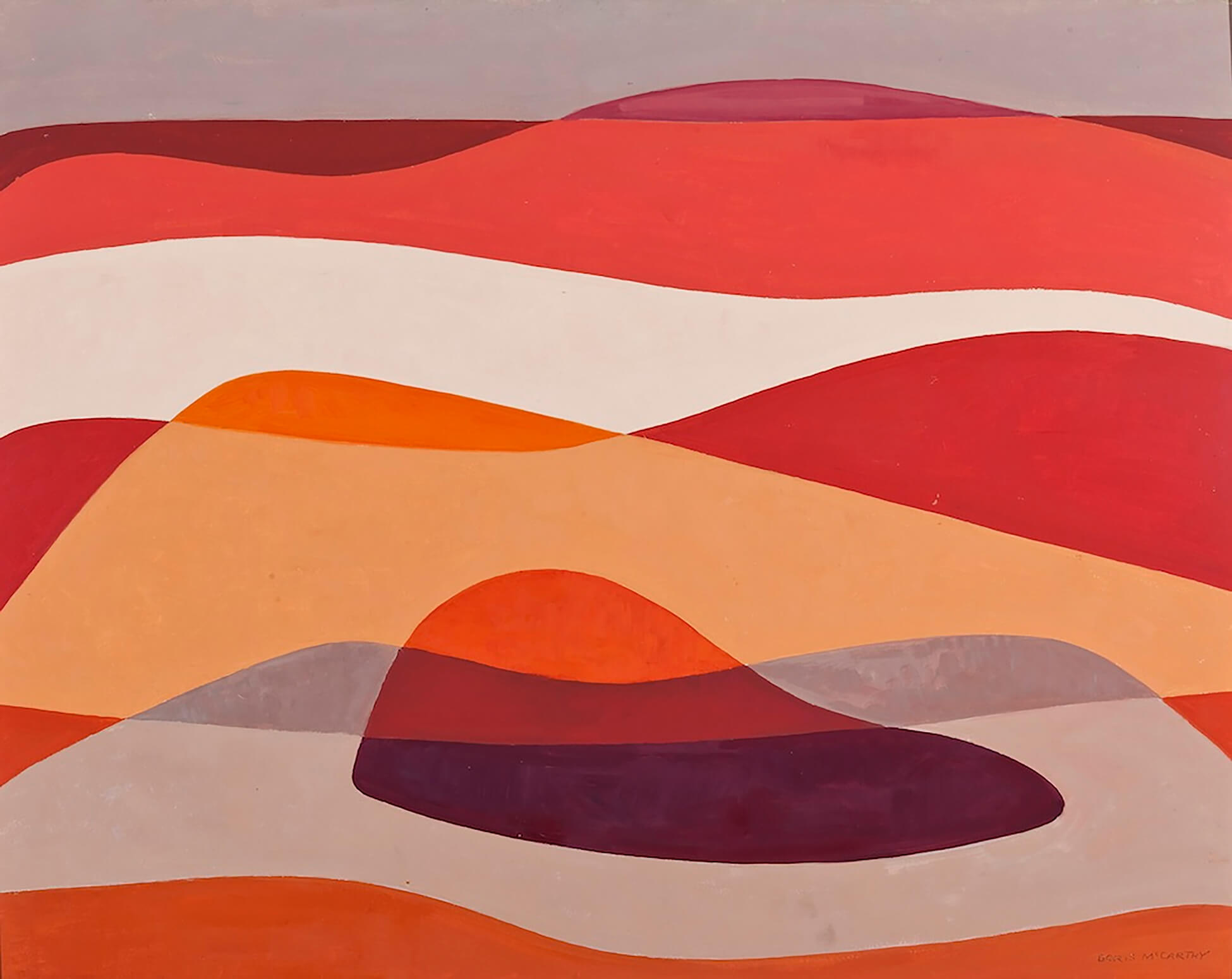Rhythms of Georgian Bay 1966

Doris McCarthy, Rhythms of Georgian Bay, 1966
Oil on board, 61 x 76.2 cm
Doris McCarthy Gallery, Scarborough
This highly abstracted and striking work offers a view of Georgian Bay, revealing what may be a combination of stones, shoreline, and waves. The reddish orange may refer to granite formations in the bay or the dramatic sunsets, and the white and greys to other types of rocks. McCarthy christened this simplified style “poetic realism.” McCarthy described the paintings she produced during this busy period as “serene”: “One curious observation is that in this most hectic time of my life, my work had a serenity that was new. Perhaps it became a sanctuary for me.” These works were only publicly shown in McCarthy’s final years, having remained in her personal storage for decades.
-
Arthur Lismer, Rock Rhythm, Georgian Bay, 1944
Oil on panel, 30.5 x 38.1 cm
Private collection -
Doris McCarthy, Dark Island, 1967
Oil on canvas, 61 x 76.2 cm
Private collectionThis painting is an example of McCarthy’s abstract works.
-
Joseph Hartman, Silent Island, Georgian Bay, ON, 2018
Digital chromogenic print, 68.6 x 86.4 cm
Stephen Bulger Gallery, TorontoIn Hartman’s photograph, the zigzag patterns formed by the rock formations as they recede into the horizon line echo the compositional pattern McCarthy keenly employed in her own work.
Rhythms of Georgian Bay bears some of the hallmarks of McCarthy’s more figurative works, with its repetition of basic forms, her “echo” (a central shape at the bottom setting the tone), and the zigzag pattern she learned from Hortense Gordon (1886–1961) guiding the eye through the whole painting. The subject and theme was a popular one among McCarthy’s mentors: Arthur Lismer (1885–1969) created Rock Rhythm, Georgian Bay, 1944, and Georgian Bay (Pine Rhythm), 1948, for example, and her department head at Central Technical School, Peter Haworth (1889–1986), painted his own version titled Georgian Bay Rhythms.
McCarthy produced around one hundred works in this abstract style in the 1960s and early 1970s, inspired predominantly by colour-field and hard-edge painting. She was determined to keep up with the various contemporary “isms” for the sake of her students: “You can’t really teach anything adequate that you haven’t experienced. And so I started using colour field and minimalism and… a certain amount of Abstract Expressionism and gesture painting…. I could get my students to take it seriously but I wasn’t really interested in it…. Colour field… taught me something…. You can see how that period of work effected my return to a more image-oriented and more painterly handling of my material.”
Had McCarthy’s abstract works been shown at the time, they might have secured her place in Canadian art more firmly, given their original take on contemporary trends. As to why McCarthy rarely exhibited these paintings, it may have been because they were too out of character for her, or, more to the point, too derivative. The influences McCarthy adopted were usually of specific things that modified her style, but it remained her style; the colour-field works represented a wholesale espousal of a technique that wasn’t really her own and had initially been done solely for pedagogical reasons. But when it came to the Arctic works that followed, she adapted the lessons learned from the abstract paintings into a new direction that she felt was hers.

 About the Author
About the Author
 More Online Art Books
More Online Art Books
 Acknowledgements
Acknowledgements